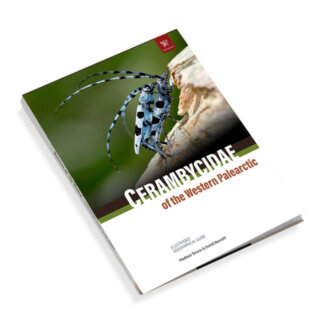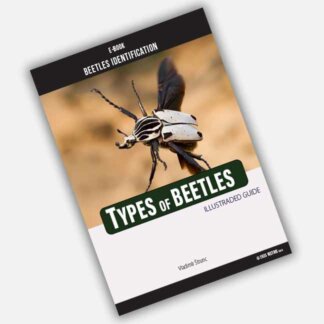Unique atlases with photos. These intriguing creaturesare a true marvel of nature. With over 63,000 species and counting, they’ve earned their title as the largest family within the order Coleoptera.
Book novelties:
Prioninae of the World I., Cerambycidae of the Western Paleartic I. June Bugs,
Types of beetles insects
New E-Book: Ground Beetles, Tiger Beetles, Longhorn Beetles, Jewel Beetles, Stag Beetles, Carpet Beetles, Scarab Beetles, Rhinoceros Beetles, Weevil Beetles, Blister Beetles, Leaf Beetles, Flower Beetles,
Start Shopping, Start Saving – prices from $3 USD

Staphylinidae
Coleoptera
Books about Beetles
Unique pictorial atlases for identifying Beetles:
(2020) Tiger Beetles of the World, Cicindelidae, Illustrated guide to the genera
(2023) Tiger Beetles of Africa, Cicindelidae, Geographical guide to the family Cicindelidae
(2024) Tiger Beetles of Orient, Cicindelidae, Geographical guide to the family Cicindelidae
(2022) Ground Beetles of Africa, Afrotropical Region
(2022) Jewel Beetles of the World, Buprestidae, Illustrated guide to the Superfamily Buprestoidea
(2008) The Prionids of the World, Prioninae, Illustrated catalogue of the Beetles
(2010) The Prionids of the Neotropical region, Prioninae, Illustrated catalogue of the Beetles
Now, one may wonder what makes these tiny beings so enchanting? Well, it’s not just their sheer numbers that leave us in awe; their astounding diversity in form and function is truly something to behold. From delicate wing patterns to fearsome-looking pincers, there’s never a dull observing these fascinating insects.
And while they may be small in stature (ranging from a minuscule 1mm to a more robust 35mm). As natural predators of many pests and decomposers of organic matter, they are nature’s unsung heroes.
But what makes them truly remarkable is their ability to adapt to almost any environment – from deserts to forests and even waterways.
Rove beetles are small in size but big in impact. They play an essential role in maintaining the balance of ecosystems by preying on other insects and serving as food for larger animals. Plus, they have some unique physical characteristics that make them stand out from the crowd, like elytra (wing covers) that expose their flexible wings.
But perhaps the most intriguing aspect of Staphylinidae is their behavior. Some species live in symbiotic relationships with ants, while others use chemical defenses to ward off predators. And did you know that certain Staphylinidae can even produce light through bioluminescence?
So next time you’re out exploring nature, keep an eye out for these amazing creatures.
We recommend:
jeweled beetles, ground beetles, longhorn beetles, goliath beetle, stag beetle, carpet beetles
Family Staphylinidae: Advantages and Disadvantages
The family Staphylinidae, commonly known as rove beetles, is the largest family of beetles, with over 63,000 species worldwide. These beetles are found in almost every environment, from agricultural soils to home gardens, and are known for their diverse feeding habits and ecological roles. Here, we will explore the advantages and disadvantages associated with the Staphylinidae family.
Advantages
Ecological Role: Many rove beetles are predators, feeding on insects and other small invertebrates, which makes them beneficial for pest control in agricultural settings. Some species are specialized predators of mites, further contributing to their ecological importance.
Diversity and Adaptability: With such a vast number of species, Staphylinidae have adapted to various habitats, including terrestrial environments close to water, leaf litter, and even nests of social insects. This adaptability ensures their survival and success in diverse ecosystems.
Longevity: Adult rove beetles are generally long-lived, which allows them to play consistent roles in their ecosystems over extended periods.
Dispersal Ability: Despite their small size, rove beetles are capable fliers, enabling them to disperse over long distances and colonize new habitats.
You can find here: Carabidae, Buprestidae, Cerambycidae, Cicindelidae, Scarabaeidae, Lucanidae, Chrysomelidae, Curculionidae
Family Staphylinidae
Disadvantages
Potential for Dermatitis: Some species, particularly those in the genus Paederus, contain a potent vesicant called pederin in their haemolymph. If these beetles are crushed against the skin, they can cause a painful skin irritation known as Paederus dermatitis.
Confusion with Other Insects: Due to their slender bodies and short elytra, rove beetles can be mistaken for earwigs or ants, which may lead to misidentification and confusion among non-entomologists.
Complexity in Study: The sheer diversity and number of species within the Staphylinidae family make them challenging to study and classify. This complexity can hinder comprehensive research and understanding of their ecological roles.
Potential for Damage: While most rove beetles are beneficial, some species can cause damage to crops or infrastructure, such as earthen banks, through their feeding activities.
In conclusion, the Staphylinidae family offers significant ecological benefits due to their diverse feeding habits and adaptability. However, they also present challenges in terms of identification and potential harm from certain species. Understanding these aspects is crucial for appreciating the role of rove beetles in ecosystems worldwide.

















